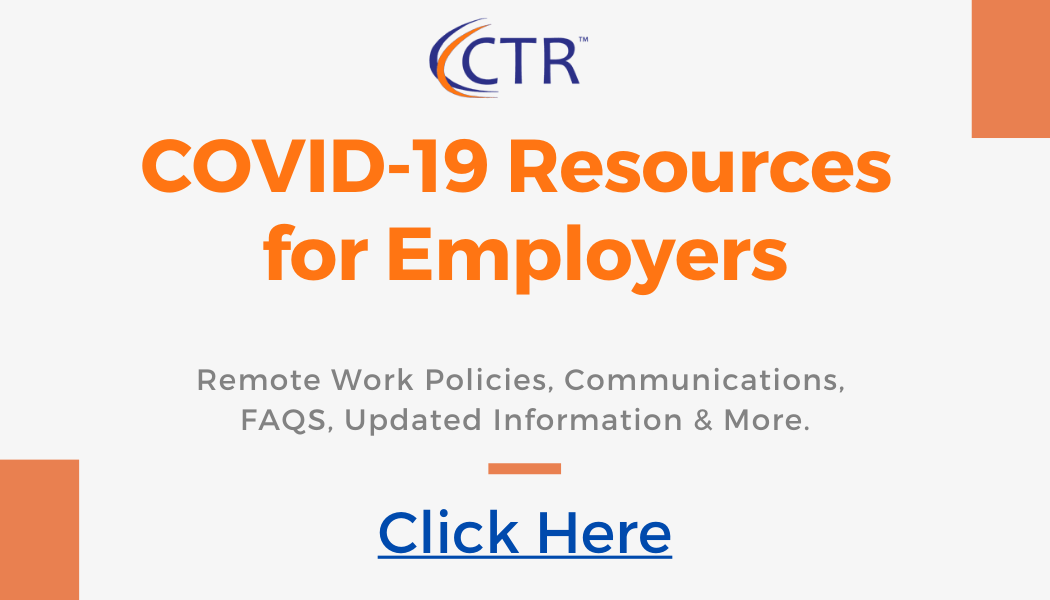With more and more cases of COVID-19, the coronavirus, being reported throughout the United States, it’s important to ensure your organization has a plan in place to keep all employees, vendors and customers safe. Whether the virus has affected your area or not, a coronavirus contingency plan is becoming standard practice for organizations around the world. Here are a few things to consider to help limit workplace exposure.
Promote Good Hygiene and Health Practices in the Workplace
The first step is ensuring all personnel follow basic rules of good hygiene. Everyone should wash their hands throughout the day, especially after using the restroom, before and after eating, and before meetings. Other basic steps including using your arm or shoulder to cover your mouth when you cough or sneeze. Employees should try not to touch their faces and limit physical contact with others (handshakes, hugs, etc.).
Advise your employees on how to recognize actual symptoms. We recommend referring them to the Center for Disease Control and Prevention website. It’s extremely important that information comes from reliable sources and that employees take it seriously.
On top of personal measures, make sure workspaces and common areas are kept clean. Disinfect and wipe down surfaces such as tables, door handles, remote controls, keyboards, and computer mice—anything handled on a regular basis—especially multiple people.
If You’re Sick, Stay Home
You may need to amend or temporarily relax your organization’s sick leave policies, but the benefits far outweigh the negatives. Many employers are insisting that sick workers don’t come in at all—regardless of symptoms. It’s a “better safe than sorry” approach, but one that could potentially limit exposure to serious illnesses like coronavirus.
To that end, remain flexible with procedures like how far in advance employees must give notice or requiring notes from doctors. Again, given the gravity of the coronavirus situation, many employers are not counting sick days taken for exposure prevention toward an employee’s annual allotment.
It’s also wise to maintain flexibility if employees are staying home to take care of sick family members, as they may have been exposed to illnesses even if they are not showing symptoms themselves.
If an employee exhibits sickness at work, it is important that they be isolated immediately and sent home as soon as possible. Communicate to all employees that no one needs to “be a hero.” When in doubt, don’t come in.
Remote Working During Coronavirus
You may have heard the term “social distancing” floating around. In short, it’s a way to limit daily person-to-person contact in effort to reduce the spread of coronavirus. At a minimum the World Health Organization (WHO) recommends maintaining a 3-foot distance from any individual who is coughing or sneezing.
If possible, consider allowing as many employees as possible to work remotely. Many companies and universities are moving in this direction for all employees, regardless of whether or not they are sick. This will help limit their exposure not only at your workplace, but on commutes to and from work.
Not every organization has experience with remote working, but that should not inhibit your decision. Now is a great time to look into various online softwares that will allow you to virtually conduct meetings or daily communication. If you’re thinking this is a good time to establish a remote working policy, SHRM provides a great template you can use as a starting point.
Set expectations for employees working remotely. Make it clear that work will still get done. You might want to ask employees to track time or check in more frequently than normal if you’re concerned with not having direct oversight.
Limiting Work Travel
Many national conferences and events have already been cancelled or postponed in an attempt to limit exposure and slow the spread of coronavirus. It’s worth reconsidering or cancelling If employees within your organization are scheduled to attend off-site events, especially in areas with confirmed cases. Employees who travel as part of their job, such as salespeople or reps may want to consider holding their meetings remotely via online conferencing platforms or phone calls.
If you have employees who have recently travelled, encourage them to keep an eye on their health and watch for the symptoms associated with Covid-19. It may even be worth suggesting they temporarily work remotely upon their return.
Refer to the CDC Traveler’s Health page for updates, warnings and precautions.
Communicate Your Coronavirus Contingency Plan with Employees
It is very important that every member of your organization has updated information on your contingency plan and guidelines. Send emails, follow up one-to-one and post flyers or posters around the workplace. Make your management team or HR professionals available to answer any questions. The more your employees understand, the better off you will all be.
Employees may worry about staying home sick or working remotely, but again, the risk of exposure is a far bigger concern. On top of communicating your contingency plan, assure every member of your organization that the health of every person is of the utmost importance. It needs to be explicitly clear that employees who choose or are told not to come in will not face any punitive action or see reduced pay (if possible).
Contact CTR with any Questions
For updates and a full list of procedures, please visit the CDC website. If you’re looking for support or guidance for your coronavirus contingency plan, please feel free to contact us. We’ll point you toward the right information.


